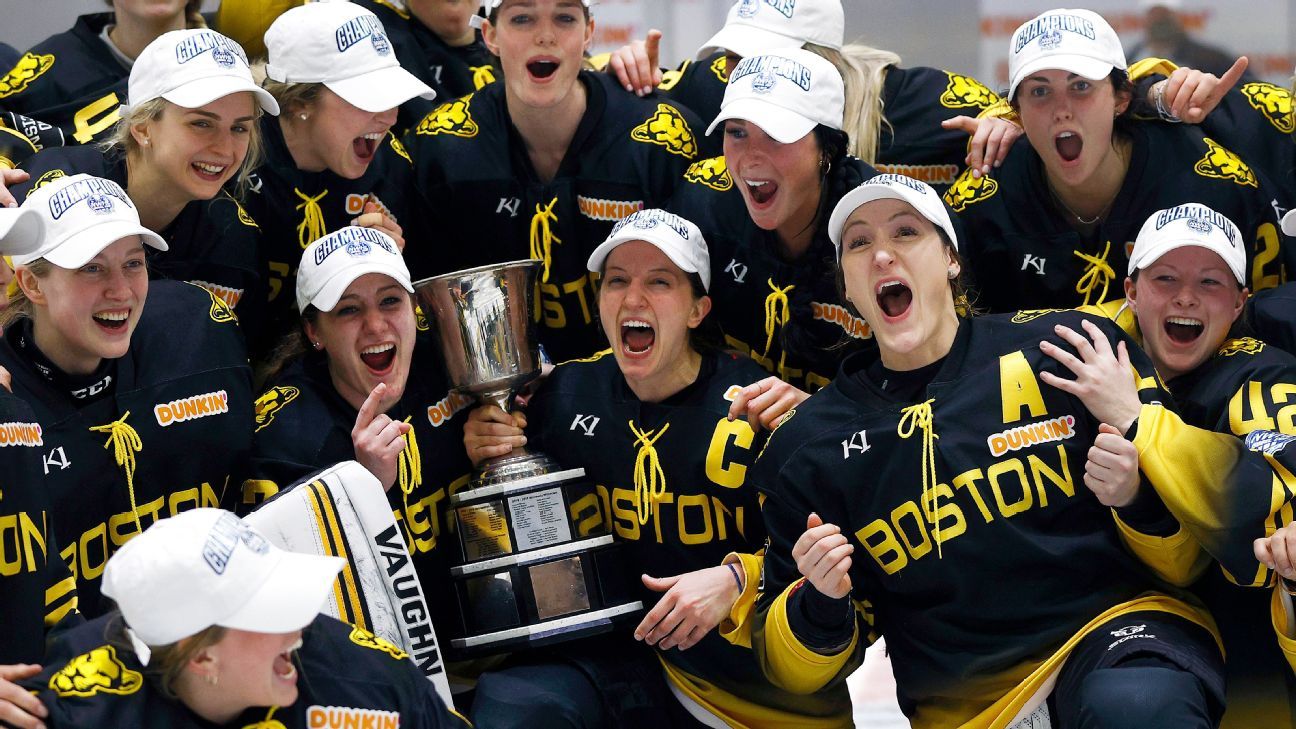Products You May Like
The National Women’s Hockey League announced Wednesday that it is doubling its salary cap to $300,000 for each of its six teams based on projections that it is making strides in achieving financial stability entering its seventh season.
“Making an investment in those players by doubling the salary cap we believe is a very strong signal that we’re serious about this,” Boston Pride chairman Miles Arnone told The Associated Press. “This is something we can afford to do. It’s substantial, yet it doesn’t mark the end. It marks the beginning of a process we expect to go on over the next number of years.”
At the same time, Arnone said the league is putting off adding an expansion franchise in Montreal until the 2022-23 season because of continuing uncertainties due to the coronavirus pandemic, particularly in Canada. Arnone has a stake in the BTM ownership group behind the Montreal expansion bid and operates the Toronto Six, which completed its first season.
The decision to increase the cap from $150,000 means salaries will average $15,000 based on 20-player rosters. Arnone estimated salaries will range between $10,000 to $35,000, not including bonuses that come with the league’s revenue-sharing agreement with its players.
Though the NWHL is not yet turning a profit, first-year commissioner Tyler Tumminia cited inroads made in generating major sponsorship deals — including a high-six-figure agreement with Discover — and growing its fan base despite playing a shortened two-week season that was disrupted by a COVID-19 outbreak and forced a near two-month postponement of the playoffs.
“In a very challenging year for all sports, I think this is a very exciting announcement and something we’re proud of as a league, frankly being at the point where our goals are literally becoming reality now,” Tumminia told the AP. “If you go to project out, we’re confident that the model and the revenue stream is going up.”
Arnone said the decision to increase the cap and delay expansion are unrelated.
Aside from the challenges of establishing a new team amid COVID-19 restrictions still in effect in Canada, Arnone noted he would prefer to focus on developing the Six’s infrastructure and fan base. The Six have yet to play a game in Toronto after spending their first season exclusively in the United States due to the border being closed.
“We will expand. And we have very concrete plans to do that, and I think you can expect very clearly that there will be expansion for Season 8,” Arnone said. “Our view is that it’s a little better to take more time, build up better infrastructure for that new team, get the right people in place and really have a good go at that.”
Arnone, the managing partner for Cannon Capital investment firm, has played a key role in transforming the NWHL’s leadership since purchasing the Pride two years ago. In that time, the league has restructured its executive model by establishing a board of governors made up of owners, investors and shareholders in a move that led to league founder Dani Rylan Kearney stepping down as commissioner last autumn.
The NWHL’s four other teams, based in Connecticut, Minnesota, New Jersey and Buffalo, New York, are operated by W Hockey Partners, which is actively seeking to sell the franchises to private ownership groups.
The NWHL was established in 2015 as a four-team league and North America’s first to pay female players a salary. It has endured growing pains and nearly shuttered a month into its second season when the NWHL made the drastic decision to slash player salaries nearly in half because of projected shortfalls under a then-$270,000 per team salary cap.
The cutbacks led to numerous high-profile players leaving the NWHL to play in Canada.
Tumminia and Arnone said the NWHL is better positioned to not have a repeat of what happened in 2016 because the league no longer operates its teams and has a better grasp on its cash flow. Though still dependent on gate revenue, the NWHL has secured longer-term deals with corporate partners and has increased its visibility.
The boost in salary has the potential of drawing additional players to the NWHL after a majority of America’s and Canada’s top players balked at joining the league, instead forming the Professional Women’s Hockey Players’ Association following the demise of the Canadian Women’s Hockey League in 2019. The PWHPA’s objectives are to establish a single North American women’s pro league capable of paying a living wage and with a long-term sustainable economic model.
“We would hope that this will, on the margin, make a difference. We’ll see, right?” Arnone said, referring to the split between the NWHL and PWHPA. “We’d love to see some reconciliation.”
The NWHL nearly tripled its viewership this season with over 2 million views on streaming platform Twitch. The Isobel Cup semifinals and final were broadcast nationally for the first time and averaged more than 100,000 viewers on NBCSN.
“We have a much better handle [on economics]. We’ve been through six seasons, one of which was of course historic on its level of disruption, to understand what the business looks like,” Arnone said, referring to this past season. “If we can make it through that, doubling the salary cap is like a walk in the park.”
